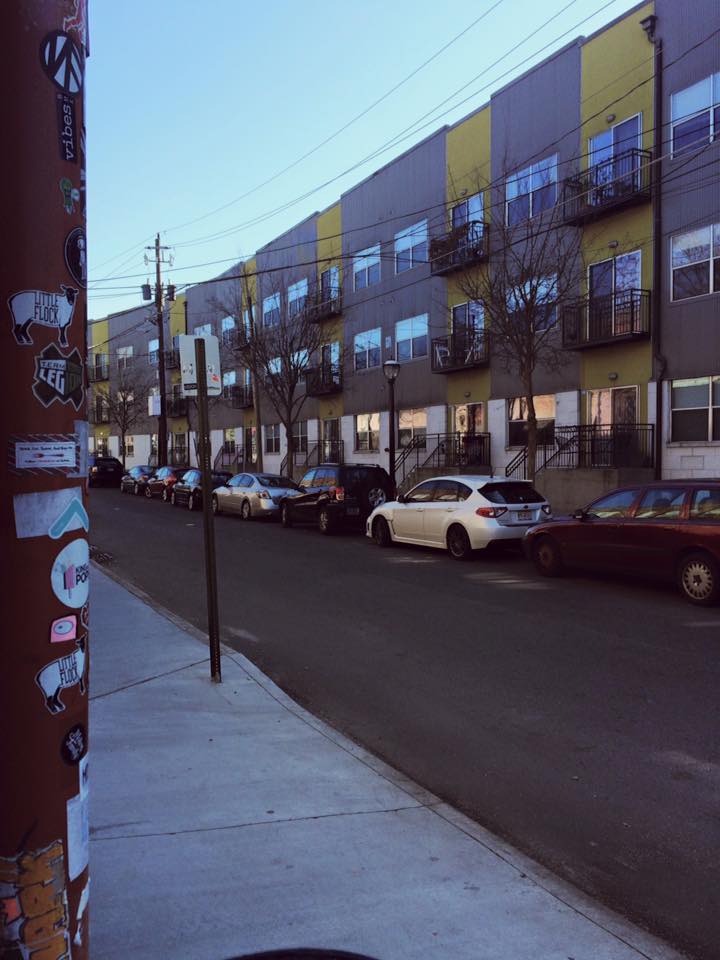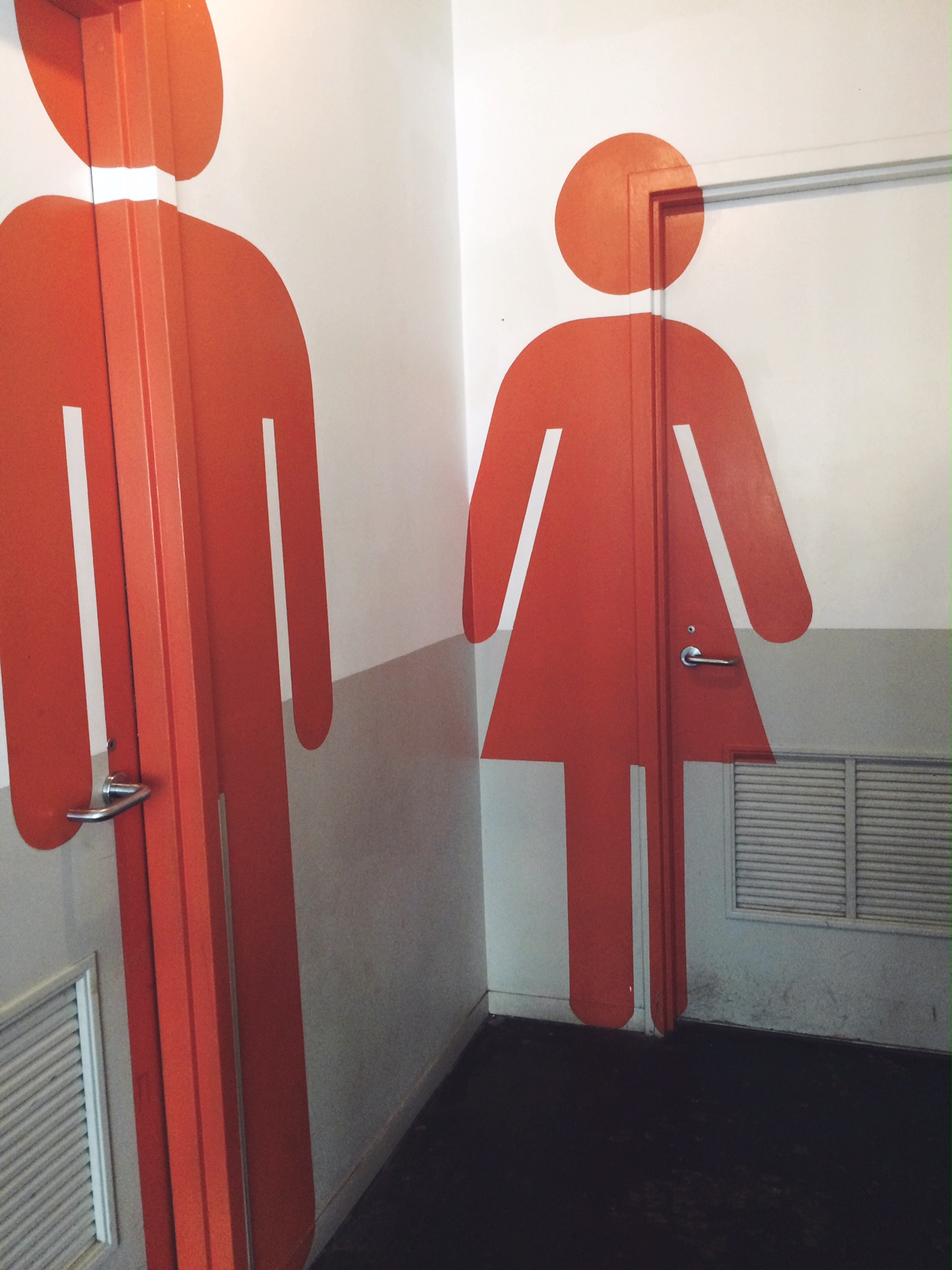When walking through the streets and other public spaces in Atlanta, you wouldn’t think twice about the acceptance and accommodation you have as a member of the ‘general’ public where all the public spaces are designed with you in mind. But what happens to the groups of people who look through the same spaces and see a clear lack of representation and compassion to have the same opportunities? Do they have to view this act as a deliberate move to push them out of the same society or see it as the society blatantly turning a blind eye to their different needs? When addressing Atlanta’s public space, we also have to understand the society’s need to integrate and assimilate the tangential groups into the general masses. The issues brought up within these groups are not about their change of identity but the acceptance of their different identity into the norm of the culture. This normative change would ultimately result in the accommodation into the public space. Regardless of the intention, we as the public have to delve into Atlanta’s public spaces and see why there is this lack of accommodation as well as think pragmatically to come to a clear revision of the public spaces in Atlanta so that all groups in our society can feel welcome and included in their opportunity to access the same space as other members of the society.
Targeted For Being Different
We see the people who are targeted against in accessing Atlanta’s public spaces are the one’s who are vastly different from the general population. For example, we see Atlanta not accommodating to the Disabled, Transgender, or Homeless by creating a built environment that goes against their own opportunity to enjoy the public space and include them into the society. Schindler talks about this type of exclusion in her article by highlighting the same issues we see in our own city of Atlanta. The issues she brought up in her article were all pointing to the fact that the built environment can be used to deter people away from certain places in the city and applying those same principles we see the ‘unwanted’ in the cities are those who deter Atlanta’s image of reformation into a ‘clean’ and upstanding community in hopes of becoming an ‘ideal’ community after being labeled dirty and dangerous . We also see the public’s strong opinions against the homeless community in Nersassova’s article. Nersassova reveals to us that the general public has a divisive relationship with the homeless population and therefore causes a majority society to cast them out as outliers to the successful society. This ridge formed between the two groups also relates to the importance in accommodating them into the usage of public space. Even in Atlanta, I saw that a local coffee shop, The Dancing Goats, was only adding to the gentrification of the neighborhood. And looking at the second digital record of the coffee shop you can see that it was not built for lower class or homeless people but for richer middle class and well off college students. Even with the visible construction in the background, we can further see how these neighborhoods are not only ignoring the needs of the people who use the public space but specifically leaving them out in the accommodation of the new usages of the public space. The surrounding gentrification only further impedes on the lesser privileged and continues to drive them out of Atlanta.
Knowingly Ignoring the Needs of the Outliers
Atlanta goes against Accommodation either by willfully going out of their way to make these groups of people from going into a designated public space or by ignoring their needs and not providing an equal opportunity to enjoy the public space. Again referring to Schindler’s piece, we can see how Atlanta might set up the city in a clear and deliberate effort to keep groups from infiltrating the ‘better’ parts of town. The simple inclusion of a staircase instead of a ramp excludes the disabled in a clear way. And though the building of a stair case might be unintentional, the effect of not accommodating to the disabled are still prominent to not ignore. And in the aftermath of including a stair case, the disabled may show their discomfort and the city’s ignorance to their needs is shown to be as frivolous instead of a necessary inclusion. And looking at my fourth digital record on Inman Park, you can see another example of gentrification happening with the background filled with new sleek apartments while the foreground is still present with graffiti and street art. With more and more neighborhoods becoming more accommodating for middle to upper class members of society, how will the ‘others’ be able to live in the public space when there is no opportunity to be there in the first place. Looking at Bazelon’s article on transgender bathrooms and how the clear cut bathrooms in a growing society with gender fluidity is a statement in itself rather than having gender neutral bathrooms. With all these instances, whether or not Atlanta may do them intentionally we still see the need to accommodate and we still are being met with ignorance and deterrence. Looking at my fourth digital record on the Dancing Goats, you can see that the bathrooms are very specifically labeled as either male or female and with gender being more fluid than ever, we can only see dismissive action when it comes to accommodation for transgender people. Their needs are not mute but are being silenced as unnecessary and Atlanta being a great beacon of social change, you can still see that great cities like Atlanta still have long ways to go in being fully inclusive.
Masking the True Intent
Lastly, we see Atlanta going against the true nature of altering the public space and blaming it on more aesthetic means. They don’t seem to want the general public to know about the ways they are going against the ‘other’ members of their society. When looking at how Schindler talked about the masking of the deliberate city planning, we see similarities in how Atlanta makes specific decisions in the city planning that might not be proven to have malicious intent and instead they describe it as routine and non-discriminatory. Rosenberger’s article also showed how little additions to the built environment like spikes, rail ornaments, and partitions on benches are designed to specifically target a group like the homeless or skateboarders. These little additions would normally be looked over had it not been for the public to garner enough attention to the true nature of the adornments on the built space. Even looking at gender neutral bathrooms, we see that society chooses to forget the needs of transgender people and their voices. And with the city going through many changes over the years, the implementation of segregated and gendered bathrooms is still a statement in itself and since silence speaks louder than words the built environment is only reflecting exclusion. And even though the built environment may have the norms of building stair cases instead of rails or building two gendered bathrooms instead of a gender neutral bathroom, these norms still go against what the minority expressively needs and deems as inclusion.
How We Can Fix the Issue
We can fix this problem that has plagued the public spaces of large urban cities like Atlanta as the majority by creating an open space for all people regardless of their role in the society and not look at them as burdens but as extensions of our society. We can start by demolishing the stigmas associated with the alienated groups of Atlanta and not see them as issues that need to be casted out. Then we should have them be able to access the same public spaces that they previously couldn’t and have them be a part of the general public while still keeping their identity and not forcing them to accept the ideals or lifestyles imposed on by the ‘normal’ population. By keeping their identity, we are accepting them into the general masses instead of them being labeled as outliers and outcasts. Even in Curbed’s article on society’s obsession with gendering everything, we see that by labeling things as female or male we exclude the fluidity that gender relations is going through in our modern age. Nersassova also talks about how the homeless population wishes not to be a part of the public but to be accepted by them and given the same usage of the public space without fear. All these groups want to be accepted and not changed. They want to be included in the society as unique aspects of the public and not just assimilated into a homogenous community. The true change they wish to see in Atlanta is to be represented in the built environment and to have the same opportunities to enjoy their city and public space without having to look everywhere and see an environment that was not built for them.



Leave a Reply